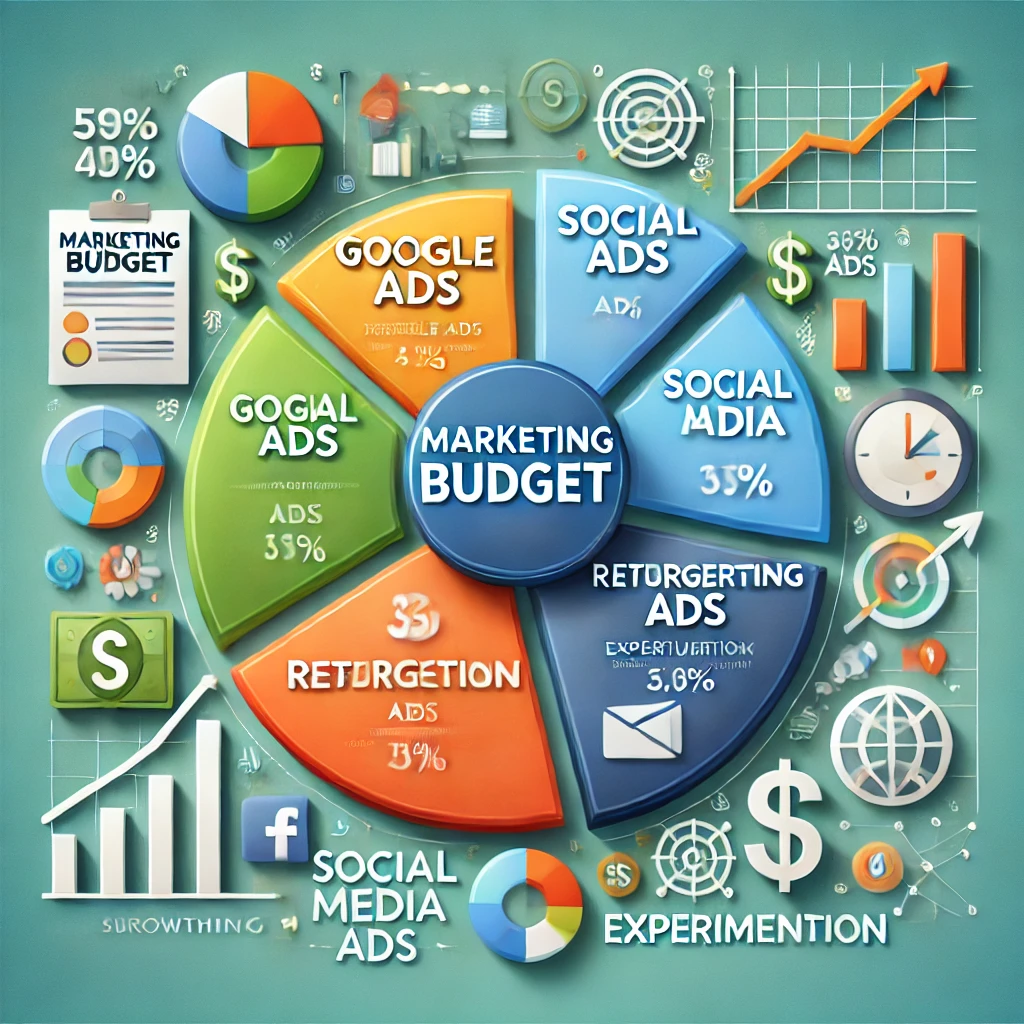
A Comprehensive Guide to Budgeting for Paid Ads: Maximize ROI Without Overspending
Introduction
The allure of paid advertising lies in its ability to deliver immediate visibility and measurable results. Yet, countless businesses find themselves grappling with runaway expenses and underwhelming returns. Budgeting for paid ads is not just about allocating funds; it’s about strategically managing every dollar to maximize return on investment (ROI). Whether you’re a startup with a modest budget or an established brand looking to scale, this guide will help you craft a results-driven advertising budget tailored to your goals.
Why Budgeting for Paid Ads is Critical
Without a solid budget, even the most well-crafted ads can drain resources. A defined advertising budget helps you:
- Control Costs: Avoid overspending while meeting campaign objectives.
- Track ROI: Clearly measure the impact of your ad spend.
- Allocate Resources Wisely: Prioritize channels that yield the best results.
Key Factors to Consider When Budgeting for Paid Ads
1. Your Business Goals
Start by identifying what you want to achieve with your ads. Common goals include:
- Brand Awareness: Focus on impressions and reach.
- Lead Generation: Prioritize click-through and conversion rates.
- Sales: Optimize for purchases and revenue.
2. Customer Acquisition Cost (CAC)
Determine how much you’re willing to spend to acquire a customer. This can vary by industry, but understanding your CAC ensures you’re not overspending relative to customer lifetime value (CLV).
3. Ad Platform Costs
Different platforms have varying cost structures. Here’s a breakdown:
- Google Ads: Competitive CPC but high intent.
- Facebook/Instagram Ads: Lower CPC, ideal for visual branding and audience targeting.
- LinkedIn Ads: Higher CPC, better for B2B marketing.
4. Campaign Type
The type of ad campaign impacts costs. Consider:
- Search Ads (Google): High-intent users, often higher CPC.
- Display Ads: Cheaper but lower conversion rates.
- Social Media Ads: Versatile for both branding and conversions.
5. Market Competition
If you’re operating in a competitive industry, you’ll need to budget more for higher bids to stay visible.
How to Determine Your Paid Ad Budget
1. Start with Your Revenue Goals
Work backward from your revenue target. For example:
- If you aim for $10,000 in revenue and your conversion rate is 2%, you’ll need 500 clicks for 10 conversions.
- With a CPC of $2, you’d budget $1,000 for this campaign.
2. Allocate a Percentage of Overall Revenue
Many businesses allocate 5-10% of their revenue to marketing, with a portion of that going to paid ads. For startups, this percentage may be higher due to growth-focused strategies.
3. Use the 70-20-10 Rule
- 70% for proven campaigns.
- 20% for new strategies.
- 10% for experimental ads.
4. Consider Lifetime Value (LTV)
Ensure your ad spend doesn’t exceed the lifetime value of your customers. For instance, if a customer generates $500 in profit over their lifetime, aim to spend less than this amount on acquisition.
Best Practices for Managing Your Paid Ad Budget
1. Set Daily or Monthly Limits
Platforms like Google and Facebook Ads allow you to cap your spending, ensuring you don’t exceed your budget.
2. Monitor Performance Regularly
Track key metrics such as CTR, CPC, and ROI. Use these insights to reallocate funds to high-performing campaigns.
3. Leverage Audience Targeting
Refine your audience to avoid spending on irrelevant clicks. Use demographic, interest, and behavioral data to target precisely.
4. Test Ad Variations
Run A/B tests to determine which ads perform best. Optimize your budget by pausing underperforming ads.
5. Utilize Retargeting
Retargeting campaigns are cost-effective because they target users who have already shown interest in your brand.
Common Mistakes to Avoid When Budgeting for Paid Ads
- Skipping Research: Jumping into paid ads without understanding CPC or competition can lead to overspending.
- Focusing Only on Clicks: High CTR doesn’t guarantee conversions. Focus on cost-per-conversion instead.
- Ignoring Analytics: Failure to review performance metrics wastes budget and opportunities for optimization.
- Overloading Budgets on One Platform: Diversify your ad spend across platforms to reach broader audiences.
Scaling Your Paid Ad Budget
As your campaigns show positive ROI, you can scale your budget incrementally. Increase spending on high-performing campaigns and explore new platforms to expand your reach.
Signs You’re Ready to Scale:
- Consistent positive ROI across campaigns.
- Stable or decreasing CAC.
- Reliable data on customer behavior and ad performance.
Tools to Help Manage Paid Ad Budgets
- Google Ads Budget Planner: Visualize and forecast ad spend.
- Facebook Ad Manager: Monitor and adjust social media ad budgets.
- AdEspresso: Manage and optimize ads across platforms.
- Kissmetrics: Analyze ROI and customer journeys.
Conclusion
Creating a strategic plan for budgeting paid ads ensures every dollar spent contributes to your business goals. From understanding your audience to tracking performance and scaling smartly, a data-driven approach empowers you to maximize ROI and minimize waste. Ready to unlock the full potential of your advertising budget? Start refining your paid ad strategy today.
Don’t Let Outdated Content Cost You Clients
An outdated website sends the wrong message to potential clients—it says you’re behind the times. Modern, professional content can change that perception instantly. With our free website content review, you’ll discover what’s holding you back and how to fix it. Don’t lose another client to outdated content! Request your free review now.


